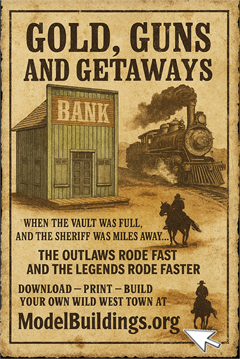Everything on model trains, model railroads, model railways, locomotives, model train layouts, scenery, wiring, DCC and more. Enjoy the world's best hobby... model railroading!
HO Code 100 Mixing Rails
Lou needs advice from others in the hobby and asks:
“I am just starting back into HO and have been buying my track from Ebay. I want to start my layout right away. Is there a problem with mixing Brass and Nickel silver track? I will eventually use all nickel silver. Thank you.”
Add your comment
6 Responses to HO Code 100 Mixing Rails
Leave a Reply















I’m doing the same thing, and I have being mixing brass and nickel rails for my train and so far I haven’t had any problems yet.
They will both work, but I would try to keep the brass mostly together so when you do change to NS it will require fewer breaks.
The only downside to mixing brass and nickel silver is that the brass will tarnish before the NS, so may need more frequent cleaning. Other than that, there should be no difference. Keep the track clean and make sure all connections between track sections are tight.
Everyone I know says “Throw the brass track and turnouts away, they aren’t worth the trouble.” If you must use it put it at the end of sidings where the locomotives seldom travel. Even keeping NS clean for good operations takes some time.
Good luck, Carl.
As pointed out by others, the three rules to follow are – keep the rail surfaces clean; insure all connections are tight, be sure to check them before any operating session; and insure to keep the different metals together and don’t intermix them. I have used brass and nickel silver for a number of years with little or no problems. But don’t use steel, then there will be real problems.
If you plan on ballasting and finish scenery, you will have to remove the scenery and ballast on the brass track you plan on replacing. use the brass on the end and wait to ballast and do the scenery around it until you have what you want.